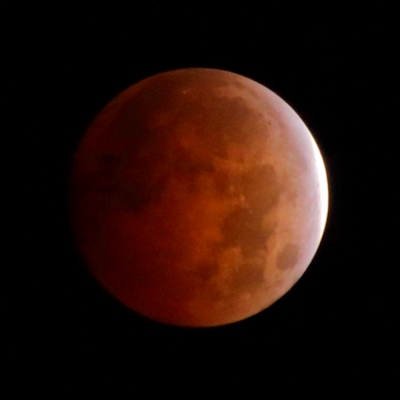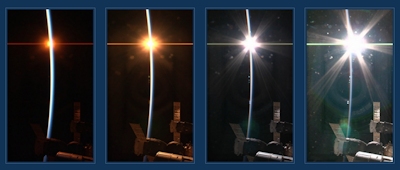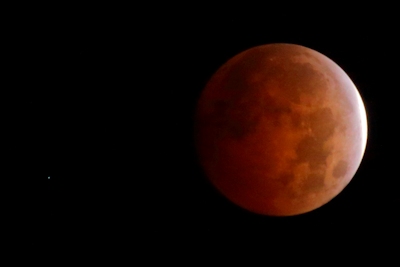
On October 8, much of the Earth was treated to a total lunar eclipse. I have photographed many lunar eclipses, and usually the pictures are nothing to write home about -- just the Moon, colorized. This time however, I noticed something I'd never seen before. As you probably know, a lunar eclipse gets its reddish glow from every sunset on Earth simultaneously glowing around the rim of the eclipsing planet. But in this photo, between the edge of the Earth's shadow on the right and the characteristic red color on the left are two more colors: bluish-white and yellow. (I boosted the color saturation a bit so you can see it better.)
My first thought was, "Cool! A tri-color Moon." My second thought was, "Wait a minute, I've seen that same color sequence before -- from space!" In my Fifteen Sunsets Per Day blog posting, I show how the color of light changes as the Sun appears to descend through the layers of atmosphere, as seen from the International Space Station. First it's bluish-white, then yellow, then red. Here, I've tipped the blog entry's sequence sideways so you can match it to the colors on the eclipsed Moon photo beneath it:


I imagine that an astronaut standing on the Moon and looking toward Earth during the eclipse would observe the sunset colors change something like the ISS inhabitants can see fifteen times per day -- albeit much more slowly.
But wait, there's more! Off to the lower left was a bonus view: the planet Uranus, which would normally be lost in the glare of the Moon without a handy eclipse to "dimmify" the closer object:

All in all, it was definitely worth getting up at 3:00 AM to see and photograph these cool celestial sights.
